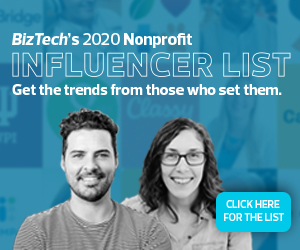1. Nonprofits Should Adopt Modern Payment Technologies
Mobile giving is a key element of Giving Tuesday’s success, and payment technologies, such as text-to-donate platforms, are a driving factor.
For nonprofits that maintain some sort of physical presence for donations, contactless payment options (which have grown in popularity in the retail space) are worth considering, both for ease of use and to reassure donors that the organization is acting safely.
2. Nonprofits Can Benefit from Marketing Automation Tools
Giving Tuesday has encouraged the sector to become savvier with digital and social media marketing. Research from the YMCA last year found that 48.5 percent of young adults ages 18 to 38 learned about causes that they support through social media, more than any other method.
The challenge, of course, is trying to scale these ambitions to reach larger and larger groups of people. One way that nonprofits can do so is through cloud automation tools, which can relieve the marketing team of remedial tasks so they have more time to think about big-picture strategy.
MORE FROM BIZTECH: Learn how nonprofits should shift their strategies during the COVID-19 pandemic.
And given the need for customer service that can respond at the speed of social media, finding ways to cut steps in the process by using customer relationship management tools, such as Salesforce and Microsoft Dynamics 365, can potentially maximize a nonprofit’s reach.
3. Nonprofits Can Still Have Live Events with Videoconferencing
The pandemic has driven the growing use of video, and for nonprofits, the right use of videoconferencing may partially offset the loss of in-person events.
A recent study from the nonprofit giving platform Classy found that in lieu of in-person events, donors are increasingly willing to take part in virtual fundraising. This presents an opportunity to invest in stronger video and audio equipment, such as tools for videoconferences, higher-end webcams and microphone systems.
Because virtual events are less costly to produce, some nonprofits may find an ongoing place for them even after the pandemic is over and live events return.













